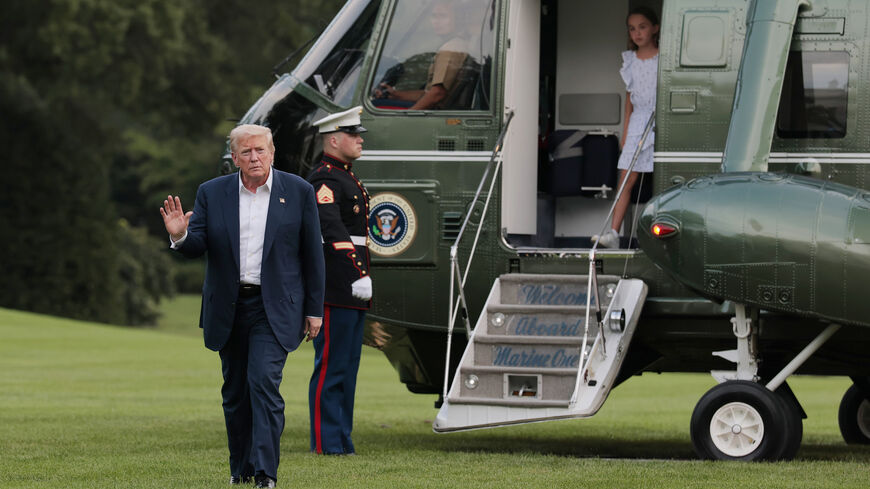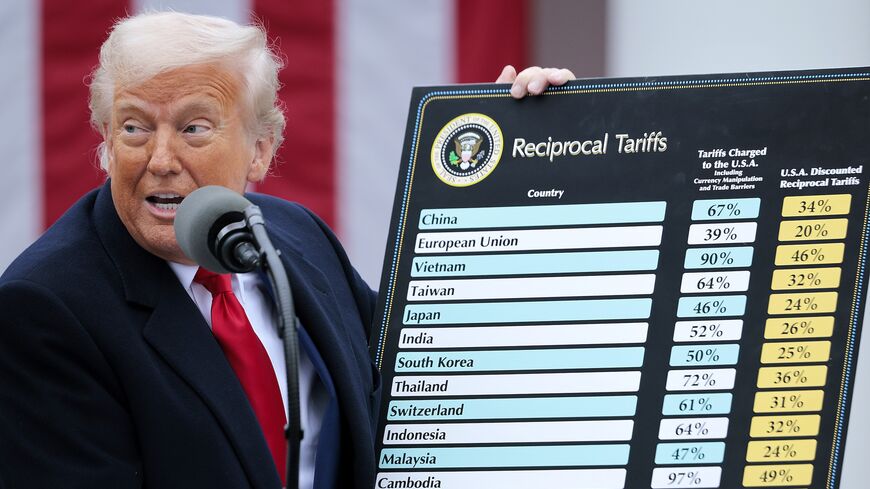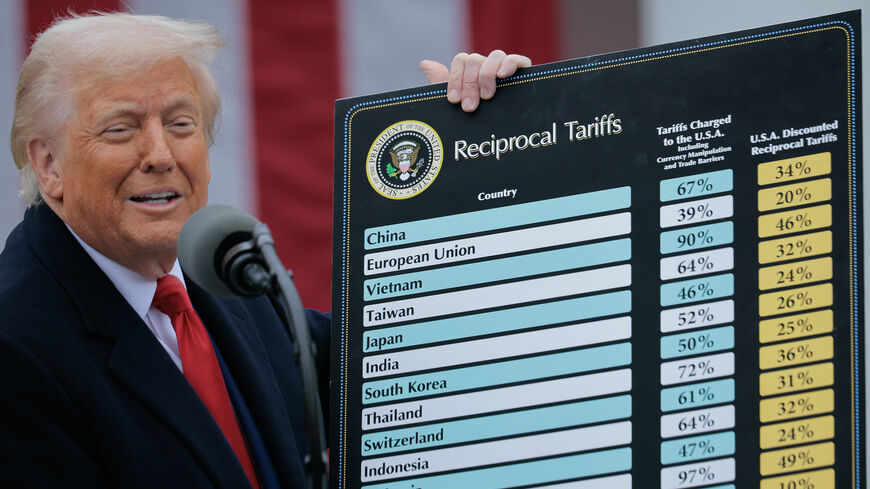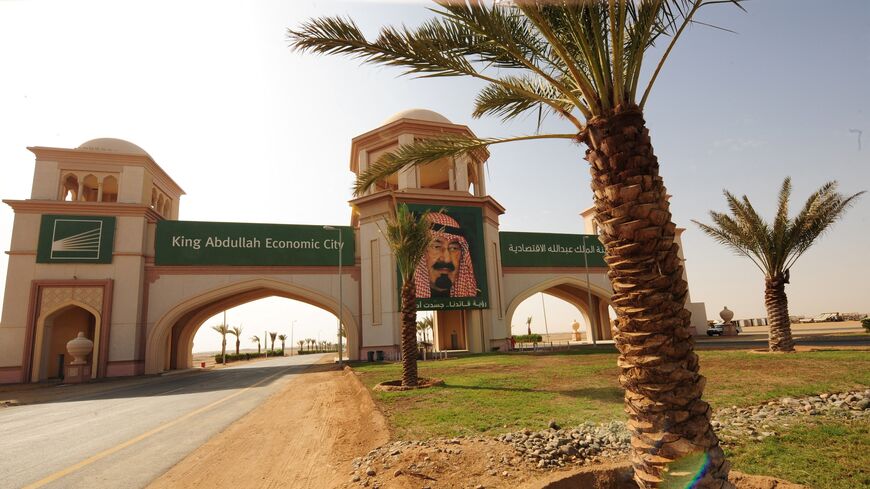Middle Eastern countries face new Trump tariffs: What to know
European and Asian markets fell again on Friday amid a broad selloff due to the economic uncertainty caused by the tariffs.
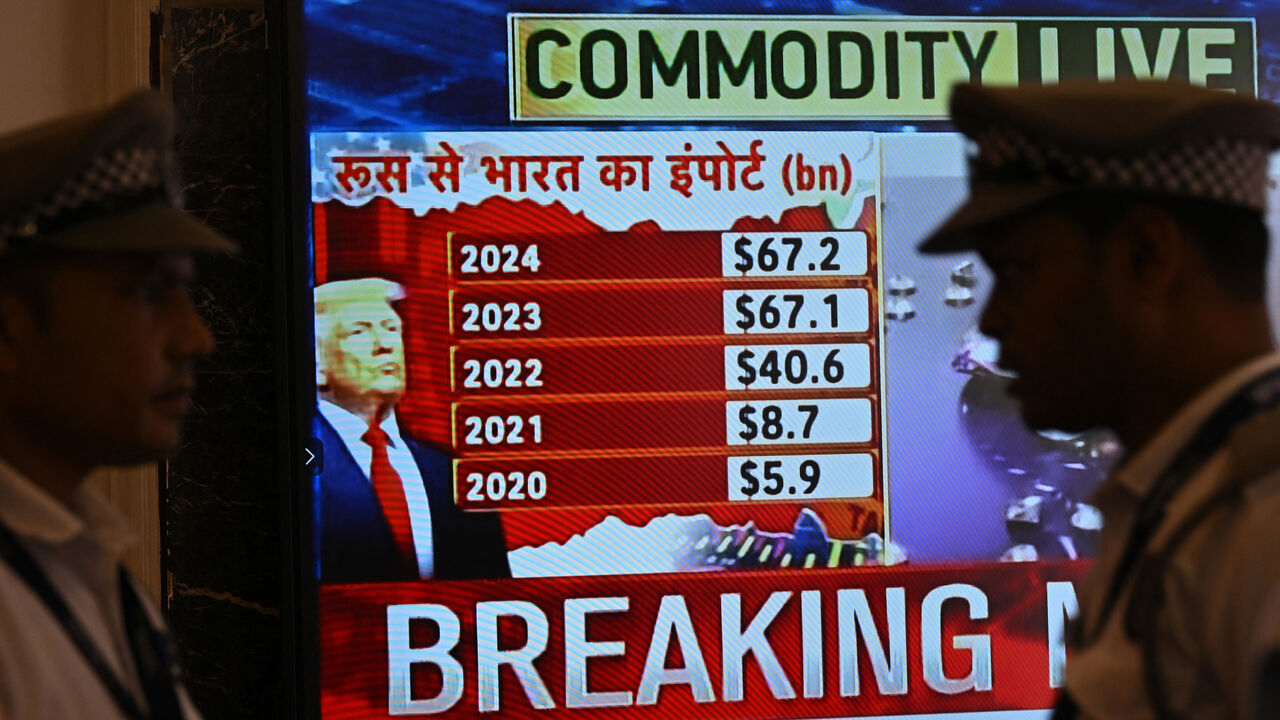
President Donald Trump announced adjusted tariffs on exports to the United States late Thursday on more than 90 countries ahead of his August 1 deadline, and Middle Eastern and North African economies were not spared.
Background: Tariffs have become a defining policy of the second Trump administration. On April 2, the president announced levies in response to what he claimed were unfair trade practices by other countries against the United States. Many countries responded with reciprocal tariffs.
“I found that conditions reflected in large and persistent annual US goods trade deficits constitute an unusual and extraordinary threat to the national security and economy of the United States that has its source in whole or substantial part outside the United States,” read an executive order from Trump issued late Thursday.
Back in April, Trump said each country would have to pay at least a 10% additional tariff on exports to the United States. The charges were higher for countries running trade deficits with the United States — those exporting more physical goods to America than they import from it.
Here are the Middle Eastern and North African countries impacted by the latest tariff adjustments:
| Country | Adjusted tariff |
| Algeria | 30% |
| Iraq | 35% |
| Israel | 15% |
| Jordan | 15% |
| Libya | 30% |
| Syria | 41% |
| Tunisia | 25% |
| Turkey | 15% |
All the Middle Eastern and North African countries not mentioned in this list, including the Gulf countries, are subject to the minimum 10% levies because they run trade surpluses with the United States.
Energy products such as oil and liquefied natural gas (LNG) — key exports from many MENA countries — are largely exempt from Trump’s tariffs. A large portion of the region’s exports to the United States fall into this category. Other sectors, including electronics, machinery, pharmaceuticals, toiletries, metals and chemical products, are also partially or fully exempt. However, Trump has vowed to expand “sectoral” tariffs that could hit some of these previously excluded categories, including semiconductors and pharmaceutical goods.
The US government calculated the tariff rates by taking a country's trade deficit in goods with the United States, dividing it by the total goods imported from that country and halving that number.
Trump extended his deadline for when the tariffs took effect until Aug. 1, giving countries a chance to negotiate new trade deals with the United States. The president has strong-armed the European Union and other countries including the United Kingdom, Japan, Indonesia and the Philippines into new trade deals.
Markets tumble
European and Asian markets fell again on Friday amid a broad selloff due to the economic uncertainty caused by the tariffs.
The Eurostoxx index dropped 1.7% to a five-week low Friday morning, while the UK’s FTSE 100 fell 0.5% following Trump’s announcement.
Japan’s Nikkei 225 was down 0.66%, and Shanghai’s SSE Composite Index fell by 0.37% on Friday.
Gulf markets fared well. The Dubai Financial Market index increased by 1.14% while the Saudi Exchange rose by 0.05%.

